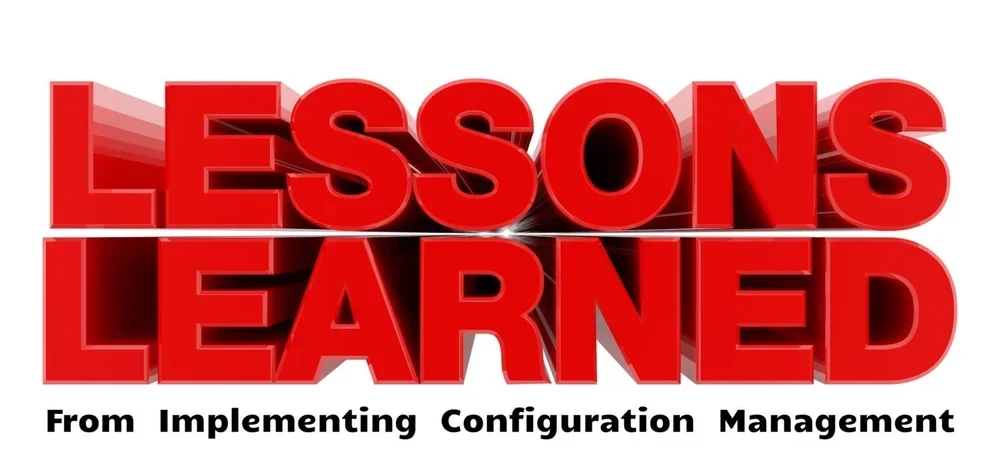Challenges of Implementing Configuration Management
Throughout CMstat’s history we have witnessed firsthand the numerous obstacles that high-tech industries, like aerospace and defense, have experienced when implementing a Configuration Management (CM) strategy with supporting software tools.
As with many new or rapidly-evolving technologies, most barriers in the successful deployment and adoption of configuration management are not overly technical in nature. Instead, they tend to be educational, organizational, procedural or contextual at their core.
As a result, most challenges are rather predictable. This is true even within industries and companies who believe that their problems and needs are all quite unique. Many may think their business problems are different, but in practice the underlying source of their challenges is rarely that unusual.
Yet, given the fact that most impediments are not uncommon, far too many companies still encounter them as if a total surprise.
To understand why, let’s start by looking at the 25 most common challenges CMstat has watched others struggle with when we were called in to help out by providing configuration management consulting services or implementing configuration management software solutions.
Believing their company is already performing adequate configuration management when it is not
A lack of management interest, understanding, appreciation, support and oversight of the role of CM within the business
Insufficient funding or ROI to justify the implementation and sustainment of CM over complete lifecycles of products and programs
Inadequate education, training, certification, responsibility and authority of CM specialists and CM project leads
Faulty assessment of existing CM maturity levels, performance gaps, process pains, and user requirements
No comprehensive CM vision articulated or strategy agreed upon for all stakeholders
Having too broad and grand goals, or alternatively too narrow and low expectations of CM
An insular or defensive business culture resistant to input, change, or learning from mistakes
Treating CM as predominantly an engineering department responsibility which then leads the project
Failure to understand most CM use cases are not of the As-Designed configuration but of the As-Deployed and As-Maintained configurations far removed from engineering PDM databases
Not considering use cases and requirements of upstream suppliers and downstream service partners
Believing that having a plan for CM is the same as having a CM Plan, or not understanding what goes into a CM Plan
Using the benefits of CM to justify an enterprise PLM project, then never getting around to fully deploying CM within it before running out of time or money
Treating CM as a PDM software feature or PLM module that just needs to be turned on
Insufficient attention during demonstration to the CM functionality and flexibility required of software
Selecting the wrong business unit, program, products, and processes to begin with
Implementing CM too late in a program or product line, or only after a catastrophic failure
Mistakes in implementing best practices for configuration identification, change management, status accounting, and verification and audits
Not enough time provided, or spending too much time, for scoping product structures, data relationships, configuration items, baselines, change processes, and workflow automation
Little consideration of applicable standards and regulatory compliance requirements
Selecting the wrong consultants and/or software products without experience in your specific industry
Not treating software providers, consultants, and contractors as part of the internal team
Failing to plan robustness for interoperability and integration issues that will always be a moving target
Scope creep by making CM dependent upon and held hostage to a much larger enterprise IT initiative
Lack of well-defined goals, milestones, reporting and metrics to measure progress and success
Again, notice that most of these are not all that technical in nature, nor are they typically related to the selection or deficiencies of a specific CM software solution.
What they have in common is the following: they can largely be avoided or mitigated by employing an experienced CM professional who has received sufficient training and experience deploying CM in the industry at hand. Or alternatively with adequate time, this internal expertise can be developed through training from organizations like CMPIC which is then supplemented by contracting with a more experienced CM consultant from an organization like CMstat to jump-start the initiative.
You can read more about the problems organizations may face that do not plan for these potential challenges HERE as well as the value of configuration management training HERE.
What do readers think; which of the above obstacles have you as a CM professional, configuration data user, process stakeholder, or manager seen over your career? Are there other challenges we have failed to include?
Let us know in this anonymous one-question poll HERE. We’ll share overall results with some additional observations in a follow-up post on the challenges of implementing configuration management. Until then, register to receive CMsights by email and follow CMstat on LinkedIn.
Receive CMsights
Subscribe to CMsights News for the latest updates from CMstat on Configuration Management, Data Management, EPOCH CM, and EPOCH DM.
Request a Demo
See how EPOCH CM and EPOCH DM support industry standards and best practices in Configuration Management and Data Management.


